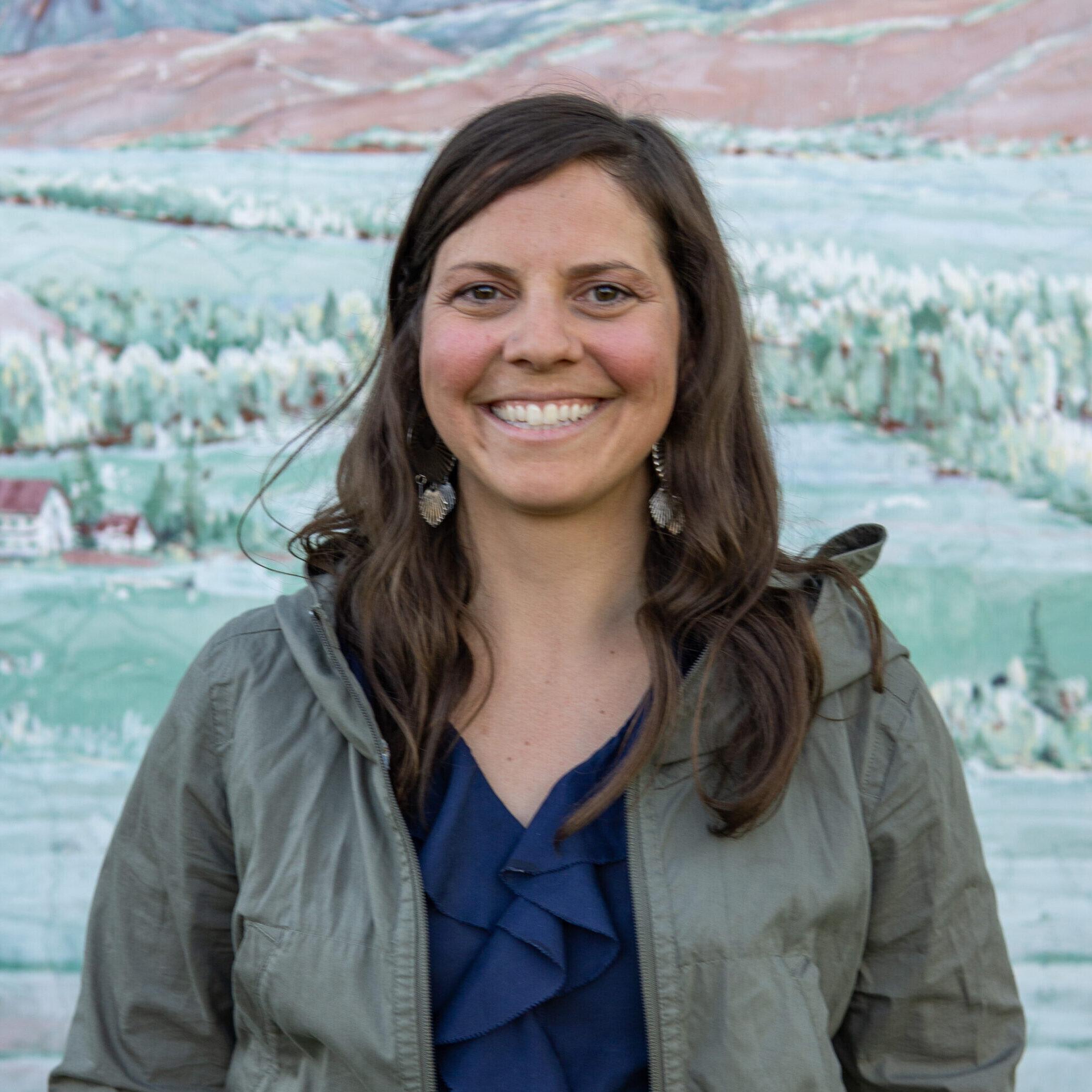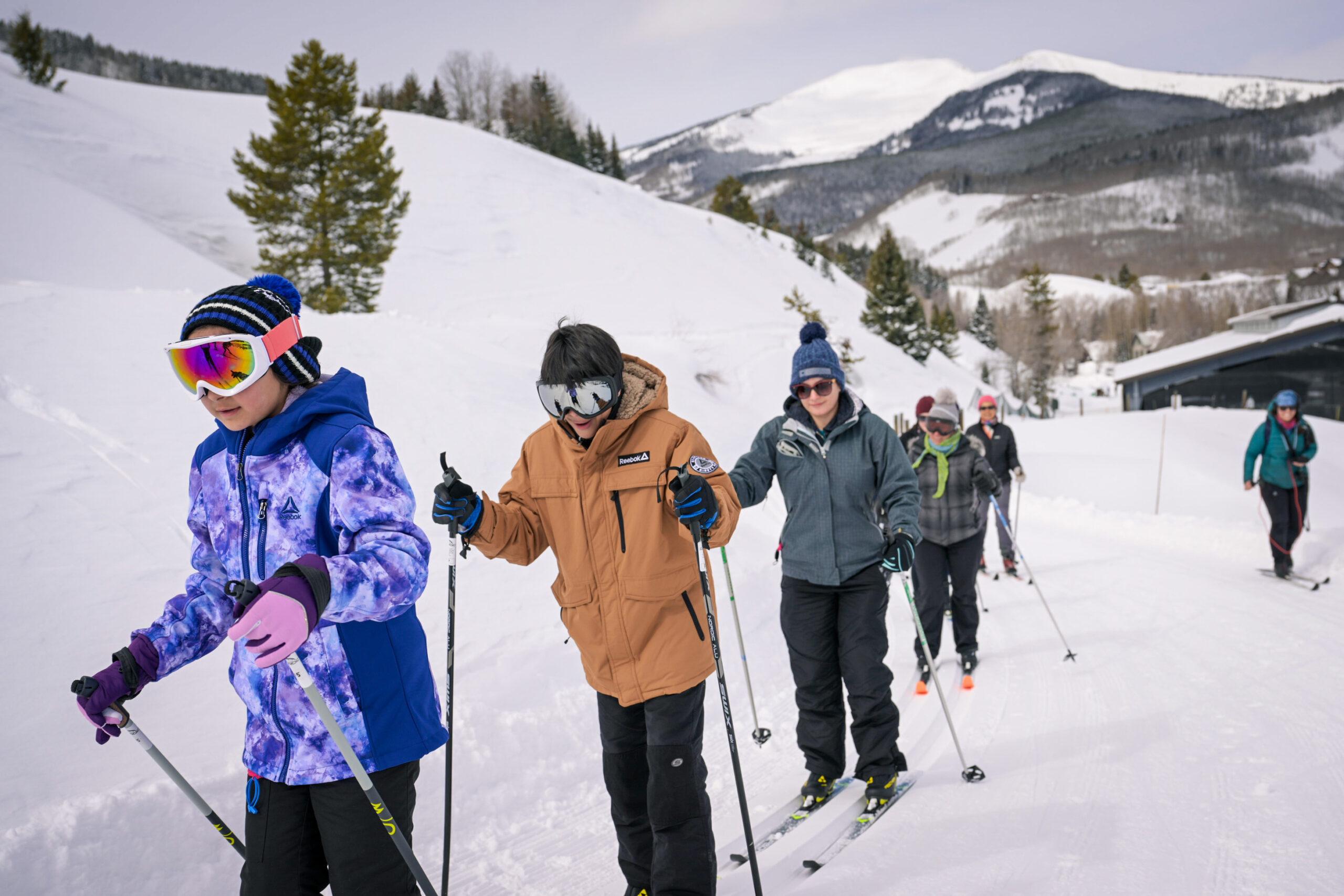
On a classic bluebird Colorado morning, ski instructor Beth Carter, known to most as Hurricane, stood outside the Crested Butte Nordic Center providing step-by-step instructions to a group of 25 skiers.
“We have trails that are across the highway, and we are going to cross the highway,” Hurricane instructed the group.
Xavier Fane, a bilingual photographer, steps in and asks Hurricane to pause. Fane is translating Hurricane’s words because about half of the group speak only Spanish. The pair take turns speaking in English and Spanish to convey the plan for the day.
Hurricane is one of six instructors teaching members of Gunnison’s immigrant community how to cross-country ski. Many of them have never done it.
For many immigrants, learning to ski can often be challenging: Gear and lessons are expensive and learning where to go to do it takes time. But, a unique program in Crested Butte has spent the last five years trying to remove those barriers — chief among them language.
Hurricane said she’s tried to learn Spanish to better communicate with participants – she even spent a summer taking lessons on an online app. But she admits learning Spanish has been difficult, so she’s found other ways – like using body language.
“I get pretty animated at that point,” Hurricane said laughing.
Marketa Zubkova is a community advocate for the Hispanic Affairs Project (HAP), a nonprofit organization working on immigrant integration all over Colorado’s Western Slope. For the past five winters, HAP’s Gunnison chapter, Inmigrantes Unidos de Gunnison, has partnered with the Crested Butte Nordic Center to offer five days of skiing so immigrants can try the sport and see if they like it.
Through skiing, Zubkova hopes the immigrants, who makeup nearly 10 percent of Gunnison County’s population, discover a fun new activity. Organizers hope it also helps unite the community.
“I believe this is something that we show our immigrants, you know, where to go, what to do, how to do it, and then they get their own equipment, they do it on their own” Zubkova said. “And for me – that is integration.”
The program is open to skiers of all abilities and provides equipment, lessons, trail passes and transportation from Gunnison to Crested Butte. The program was made possible through grant funding from the Gunnison Valley Community Foundation.
“And it's free,” said Zubkova with a smile. “That's the best thing, unbelievable nowadays, but it's free.”
The outings have grown in popularity – on any given Saturday this winter, 15 to 40 skiers of all ages have shown up.
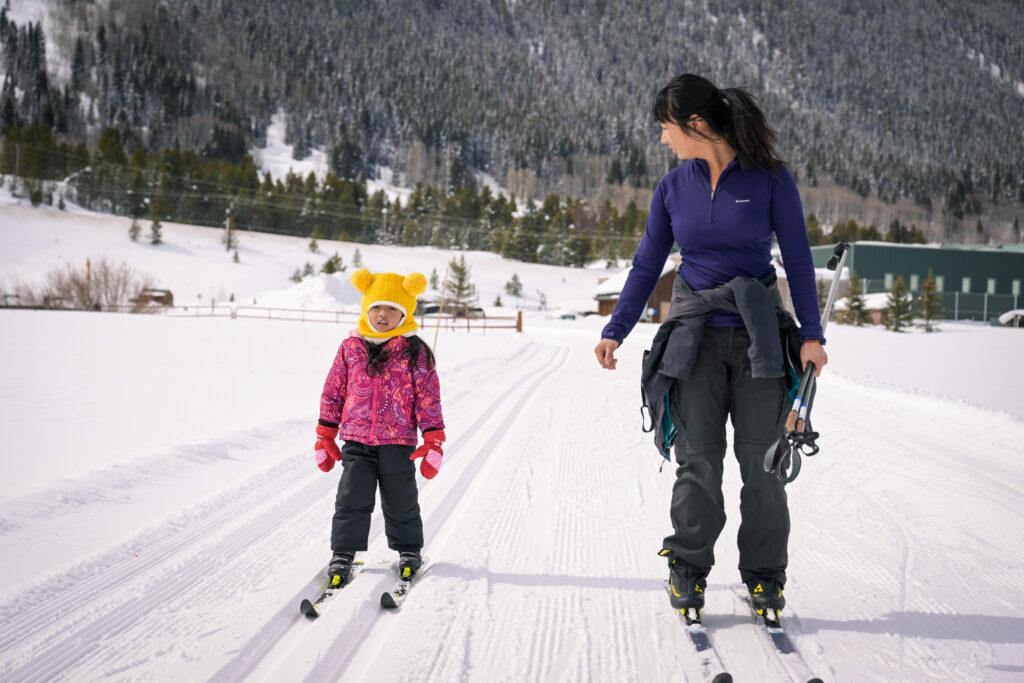
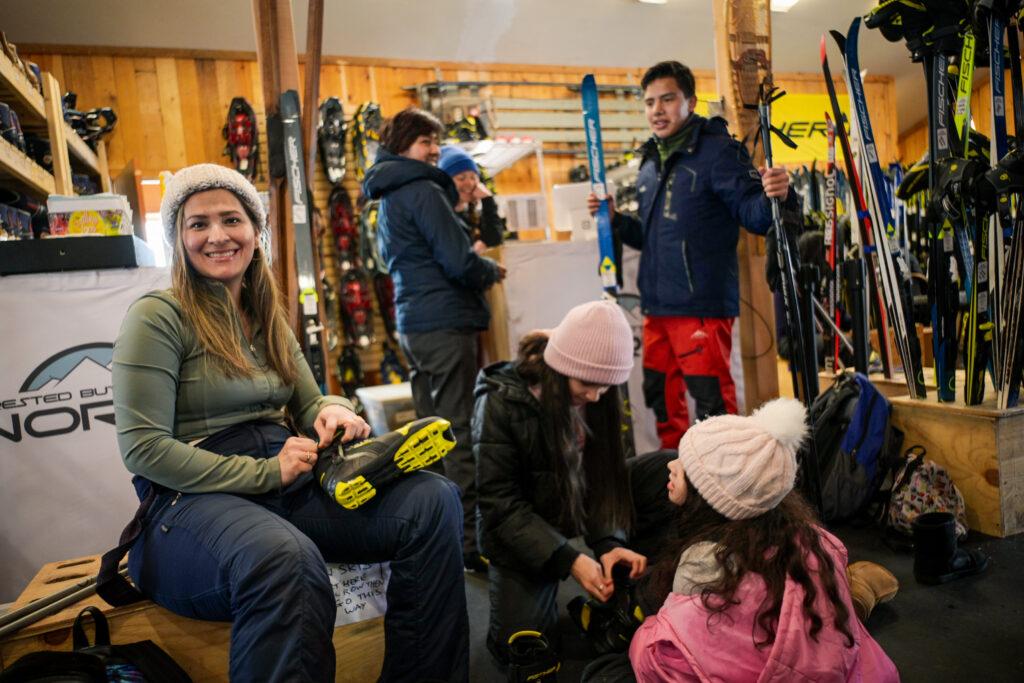
Despite its popularity today, Zubkova said when the program started five years ago, it was slow to catch on.
“I think at the beginning, people were a little scared,” said Zubkova. “They didn't know what to expect, so after overcoming these initial fears, the word spread around the community, and now I believe it's one of the most popular activities we have been doing.”
While waiting for the skiing to begin one recent day, participants fiddle with boots, clip into skis and prep their clothing layers. The beginner skiers hop into vans to shuttle to the trailhead, while the intermediate skiers prepare to follow Hurricane up a steep hill behind the nordic center.
Once everyone was ready, Hurricane mobilizes the group while practicing her Spanish.
“¡Vamos a esquiar!”
The skiers follow Hurricane up the hill, placing their skis in the perfectly parallel nordic tracks. And despite it being February, everyone is sweating in their winter jackets.
After making their way up and over the hill and across the highway, both groups of skiers meander through meadows beneath the towering and majestic 12,000-foot Mt. Crested Butte. Time passes quickly, and after a few laps around the meadows, the lessons near an end.
Instructors usher skiers back to the parking lot in droves. Once each skier is accounted for, Hurricane announces it is time to head back. And everyone has a choice: pile into the vans and shuttle back, or follow Hurricane back up and over the steep hill to the nordic center.
One first-time skier decided to challenge himself, and his new skills, on the hill.
Ricardo Esqueda is a community outreach liaison for the city of Gunnison. While he joined the ski day as a participant; he also helped translate between the skiers and their instructors. And even though he’s lived in the valley for nearly a decade, this day was his first-time cross-country skiing.
“Oh my gosh, it was so much fun,” Esqueda said. “I learned how to do the kick-kick-glide technique. I don’t think I have my poles right yet either, I’m kinda trying to do just what feels comfortable.”
Hurricane skied alongside Esqueda while providing more advanced instructions – like how to climb up big hills using cross-country skis. The technique involves digging one's heels into the snow – and after a few minutes of practice, Esqueda was on his way.
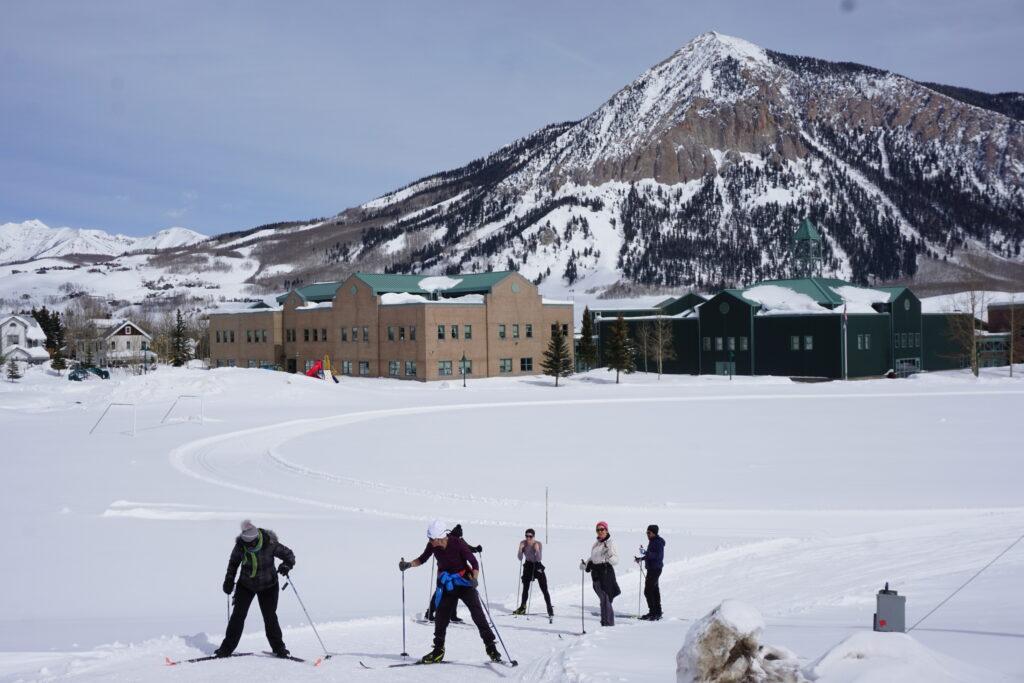
At the end of the day, skiers returned to the nordic center in waves, trickling inside to return their rental skis and boots to the racks. Then they indulged in apres-ski snacks: fizzy water, cheese, crackers, fruit, and cookies provided by the nordic center staff. Faces were flush from the sun, hair was matted and sticky from sweat – and nearly everyone was grinning from ear to ear while recounting the day spent outside in the mountains.
Joellen Fonken welcomed the skiers as they arrived back to the nordic center. Fonken is the programs manager for Crested Butte Nordic Center and takes the lead organizing the immigrant ski days.
“Personally, I believe that cross-country skiing should be accessible to everyone,” Fonken said. “And the first time somebody sees or feels that glide, that's when the smile starts. And that's what it's all about.”
Gregorio Blanco and Orquidea Larraz have lived in Gunnison for over 20 years, and have participated in the ski program since it began.
“Now we do it by ourselves, not with the group, but we try to do it by ourselves,” Blanco said. “And we bought our own skis now.”
They say the skills were hard to learn at first, especially mastering the art of skiing down steep hills. But now, Larraz can do it on her own, and she loves it.
“It changed my life,” Larraz said with a smile. “In other times for me it’s more staying home and not happy, but now it’s happy.”
